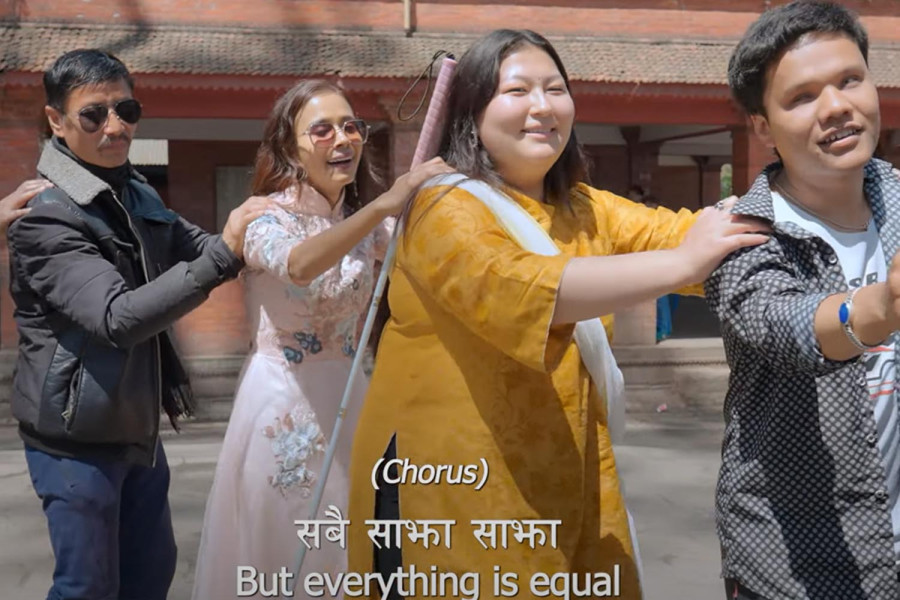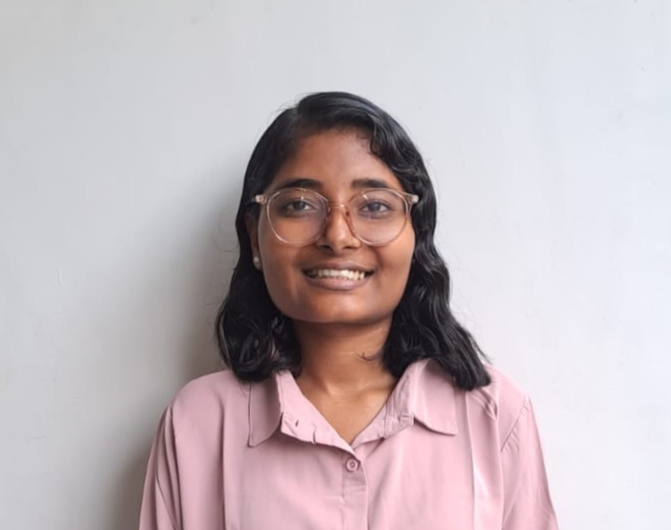Entertainment
‘Sikka’ harmonises diversity and accessibility
Blind Rocks’s new music video with audio description and closed captions ensures accessibility for blind and deaf audiences.
Aarati Ray
Are you about to watch your favourite music video? Wait a second and try this: close your eyes and imagine watching it. No peeking and cheating. If necessary, blindfold yourself. Now, you can watch your video. You might feel the bass, hear the singer’s voice, and tap your foot to the beat. But you are missing out on the visuals and the story shown in the video.
Think about watching BTS’s ‘Spring Day’ video without seeing the choreography or the snowy train platform and abandoned amusement park scenes. Would the music feel the same? Or imagine Taylor Swift's ‘Cardigan’ without the magical visuals of her playing a moss-covered piano in an enchanted forest. Or ‘Bujhina Maile’ from ‘Boksi ko Ghar’ without Keki Adhikari’s dance and the gloomy setting. Would you fully enjoy the song?
Let’s change the scenario a bit. Imagine you’re watching a movie but can only hear the dialogue and soundtrack without seeing any of the scenes. Or government instructional videos or PSA (Public Service Announcement) about emergency preparedness without seeing the step-by-step demonstrations. How effective would that be?
Just thinking about it makes us hold our breath, but blind and visually impaired people go through this every day. We sometimes take our privileges for granted and forget that video content isn’t accessible to everyone.
On-screen information is often essential for context, and without it, blind viewers might miss out on fully engaging with the content. In an era dominated by visual content, where information is frequently shared through images, videos, and graphics, it’s crucial to ensure this content is accessible to everyone, including visually impaired people.
If we don’t, they will miss out on opportunities to contribute and engage with society.
Understanding this gap, Blind Rocks, an NGO dedicated to empowering blind and visually impaired individuals, premiered their gender grant project on June 1, 2024, in celebration of their 10th anniversary. Supported by the British Council Nepal, they released an accessible and inclusive music video titled ‘Sikka’.
‘Sikka’ is Blind Rocks’ third inclusive music video initiative. It features audio descriptions for accessibility for the visually impaired and blind, as well as closed captions for the deaf.
Audio description (AD) is a type of assistive technology that uses narration to describe important visual elements in media. In ‘Sikka’, the creators added audio descriptions to provide clear and concise narration of all critical visual elements, making the media experience more inclusive.
Unlike typical videos, this AD music video includes a voice-over that narrates each scene, such as, “In the first scene, a woman wears an earring, and then another woman unfolds a white cane.” This narration accompanies the music throughout the video, allowing blind and visually impaired individuals to not only enjoy the music but also ‘see’ the video through audio description. AD can also help people with neurodivergent conditions like Autism Spectrum Disorder (ASD) who might have difficulty understanding body language or cues.
The music video, which premiered at GATE College in Kathmandu, is now on Blind Rocks’ YouTube channel. It has audio descriptions and closed captions in English and Nepali.
In its opening lyrics, ‘Sikka’ begins with, “Two wheels of one cart, two sides of one coin, sky and land are not half, but everything is equal,” highlighting its message of inclusivity.
Similarly, the lines “I am here, you are here, that’s why the earth is revolving,” further reinforce this message. Just like a coin has two sides, this music video emphasises that society needs the equal participation of every person to be complete.
The video ‘Sikka’ can be celebrated for its inclusivity, not only because it includes audio descriptions and closed captions for the blind and deaf communities but also because it features a diverse team. The composers, editors, musicians, directors, actors, and performers come from visually impaired, disabled, and gender minority communities.
The cast includes blind artists like Shristi KC and Sami Lawati, Anjali Pakka with an intellectual disability, Anish Chaguthi, who is hearing impaired, and Sangita Majhi and Binu Thapa with physical disabilities.
It also features Aarohi Basnet, a trans woman, child artists, and individuals without disabilities. This truly warms the audience’s heart with how beautiful the world can be with inclusivity, showing the importance of embracing each other's differences.
The audio description may seem new to Nepal, but it has been widely adopted in countries like the UK and the US, especially after COVID-19. Platforms like Netflix now offer audio description features. The concept of audio description began in the US in the 1980s, but Nepal has been slow to adopt it.

Blind Rocks took a significant step in August 2023 by launching Nepal’s first audio descriptive music video and has been advocating for its use since then.
At the ‘Sikka’ premiere, KC, the founder and president of Blind Rocks, highlighted that the visually impaired community often misses out on the social messages conveyed by films and music videos due to lack of accessibility. She argued that this denial infringes on their fundamental rights of equality and the right to information as guaranteed by the Constitution.
Prabin Shrestha, the director of the music video and a wheelchair user, opined, “Society often fails to recognise the capabilities of disabled individuals. Change must start within every household.” He added, “Disabled people are breaking stereotypes, and music videos like ‘Sikka’ prove how individuals with disabilities can contribute to the art and entertainment sector.”
Aside from its inclusive approach and diverse participation, the music video stands out for its high-quality music, lyrics, and composition. The visuals, cinematography, and message are all synchronised and praiseworthy. The detailed AD in the video too, shows that a lot of effort was put into accessibility.
However, some viewers, myself included, felt that there might have been opportunities to enhance the voice-over for the audio description. The closed captions in Nepali, too, need more work.
The descriptions sometimes felt rushed, especially during quick scene changes, and occasionally overshadowed the music. It's important to note that these observations come from my perspective as a sighted person and may differ from those of blind and visually impaired individuals.
For instance, Narayani Dawadi, a visually impaired audience member at the premiere, expressed, “In today's digital world, filled with visual content, we often feel left out. While we can hear the music, we miss the details, context, and trends, relying on others to understand videos fully. If more music videos included audio descriptions like ‘Sikka’, it would greatly increase accessibility for us. It would allow us to truly enjoy videos and stay informed about current messages and trends, helping us stay connected with the world.”
At the premiere, many blind and visually impaired individuals like Dawadi responded positively. They appreciated this initiative by Blind Rocks, despite recognising areas for improvement. They saw it as a significant step forward in a place like Nepal that often excludes them from opportunities.
According to the 2021 census, 2.2 percent of Nepal’s population is disabled, encompassing various categories such as physical, low vision, blind, deaf, and others. Videos like ‘Sikka’ are an urgent call, as KC mentioned, for visual content, media, and entertainment to become more accessible and inclusive for all types of bodies and minds.
With advancing digital technology, let’s hope that not only NGOs like Blind Rocks but also the government and entertainment sectors will take steps to initiate and enhance the quality of audio descriptions and closed captions and explore other accessibility features. What’s needed is just a bit of a more informed and empathetic approach to understanding and meeting everyone’s diverse needs.




 18.37°C Kathmandu
18.37°C Kathmandu










